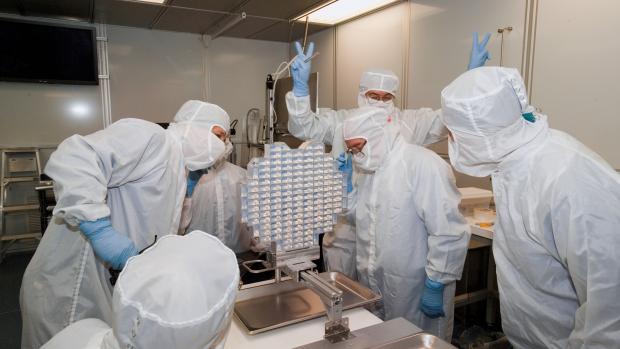What Prompts Citizen Scientists to Conduct Research for Free? Neither Money nor Résumé Building
As Spacecraft Beams New Comet Photos, NYU-Poly Researcher Reports that Volunteer Astronomers Respond Differently than Contributors to Wikipedia, Flickr and Software

Only days before the NASA Stardust spacecraft beamed home comet photos long awaited by astronomers, other researchers revealed the factors that motivated citizens to volunteer without pay to examine more than a million images of space dust captured by the spacecraft’s predecessor.
The team of researchers headed by Polytechnic Institute of New York University (NYU-Poly) Assistant Professor of Technology Management [USER:376|profilelink] reported citizen astronomers were best motivated to spend unpaid hours looking for microscopic stardust particles by the project’s objectives, the fun they experienced and the reaction they expected from their friends and family. Some of those motivations varied significantly from other crowd-sourced projects.
The iConference 2011, held February 8 – 11, 2011 in Seattle, chose “Dusting for Science: Motivation and Participation of Digital Citizen Science Volunteers” for its Best Paper Award. Co-authors are Nov, Ofer Arazy of the University of Alberta School of Business and David Anderson of Space Sciences Laboratory, University of California, Berkeley (UC Berkeley). A few days after the conference closed, on February 14, the second Stardust spacecraft beamed home its comet images. Meanwhile, thousands of volunteers have been sifting for years through 1.6 million series of digital images in search of interstellar dust captured by the predecessor Stardust spacecraft. That daunting volunteer project, called Stardust@home and headed by UC Berkeley's Space Sciences Laboratory Associate Director Andrew Westphal, was studied by Nov and his colleagues.
“Unlike those who contribute to YouTube, Flickr or Wikipedia, citizen scientists do not immediately benefit from participation,” Nov said. “Science simply doesn’t offer instant gratification. That may be one reason that participation dropped off precipitously with tenure in the project. We wanted to find out how to encourage participation.”
Citizen science projects, which harness volunteers’ skills, time, effort and computing resources, cost-effectively contribute to scientific research and engage the public in science. Understanding volunteers’ motivations is key to attracting and retaining these online laborers of science.
Nov’s prior research found motivations differed for contributors to Wikipedia, open source software and the photo-sharing site Flickr. Early research by Nov found that Wikipedians were primarily motivated by the fun of contributing; other studies found that improvement of professional reputation is also a motivator.
When Nov and other researchers surveyed Flickr contributors for a paper that was chosen Best Paper of the 2009 AAAI (Association for the Advancement of Artificial Intelligence) Conference on Weblogs and Social Media, they found that a sense of community was most important to Flickr contributors.
Based on their research, Nov and his colleagues recommended that citizen science projects communicate their mission through social media and employ gamelike tactics to create fun for small research tasks. They pointed to the success of open-source software and Wikipedia, which allow participants to progress in rank. Nov and his colleagues also encouraged professional scientists to adopt Wikipedia-like citizen science structures that empower citizen scientists.
About Polytechnic Institute of New York University
Polytechnic Institute of New York University (formerly Polytechnic University), an affiliate of New York University, is a comprehensive school of engineering, applied sciences, technology and research, and is rooted in a 157-year tradition of invention, innovation and entrepreneurship: i2e. The institution, founded in 1854, is the nation’s second-oldest private engineering school. In addition to its main campus in New York City at MetroTech Center in downtown Brooklyn, it also offers programs at sites throughout the region and around the globe. Globally, NYU-Poly has programs in Israel, China and is an integral part of NYU's campus in Abu Dhabi.
Note to Editors: NASA photo of the original spacecraft’s return can be downloaded at http://engineering.nyu.edu/about/press/releases.




